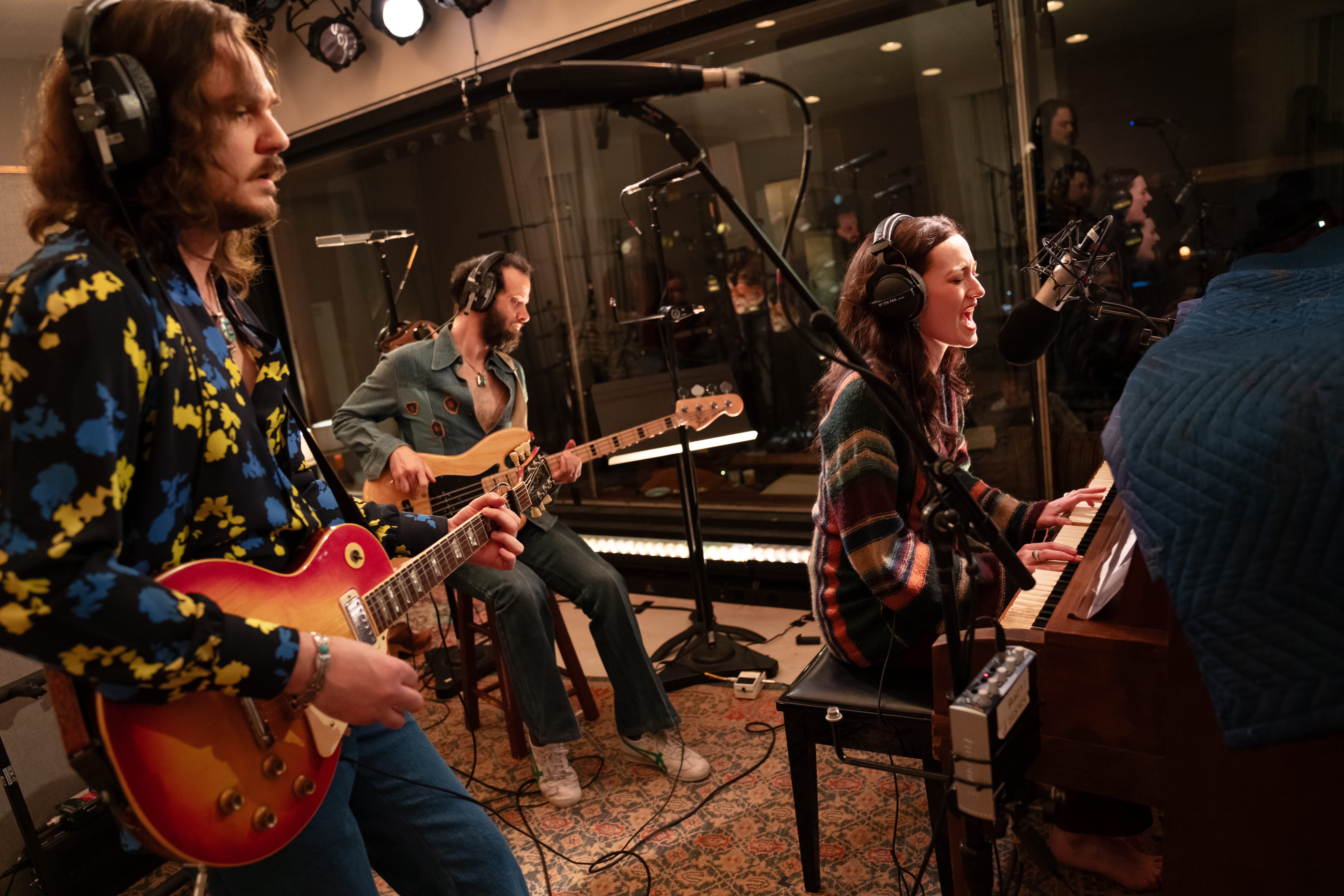The Goldman Project

in The Goldman Project
(© Kim T. Sharp)
Maybe it’s the 90-minute running time of Staci Swedeen’s The Goldman Project, now at the Abingdon Theatre, perhaps it’s the piece’s episodic nature, or maybe it’s even its setting — a comfy living room filled with old, but lovingly cared for furniture (courtesy of scenic designer Ken Larson) — but whatever the case, it’s impossible to banish one’s sense that this often compellingly performed play feels strangely like a by-the-numbers made-for-television movie about the legacy of the Holocaust that’s been transported to the stage.
We’re in Inwood in 1994 in the living room of 71-year-old Naomi Goldman (Anita Keal), who endured two years as a prisoner in Auschwitz and has rarely shared much of what happened to her during and immediately following the war with her son, Tony (Sam Guncler). When Aviva (Bernadette Quigley) an ex-girlfriend of Tony’s from college resurfaces in his life, asking to interview his mother for a project that documents survivors’ stories, Naomi’s long silence is broken, and a long-held secret is revealed.
Before the climactic moment in which Naomi describes her experiences in the concentration camps — a scene which Keal handles with delicate nuance and steely dignity — Swedeen fills her play with moments that are all-too-familiar from both stage and television dramas that center on Nazi atrocities and familial dysfunction. Tony is dealing with a failed marriage to a non-Jew and has long-simmering rage issues about his childhood with a distant mother and father, while Aviva, a former free-spirit who eschewed organized religion, has rekindled her faith following a bias incident at a high school in which she was working as an artist-educator. (Her story lacks a certain level of credibility, but it is delivered with powerful emotion by Quigley).
As if the drama of Naomi’s life were not enough, Swedeen overburdens her play by having sparks fly anew between Tony and Aviva. Moreover, the playwright’s pretensions go beyond the made-for-television movie realm into the sitcom world during the play’s first-half, thanks to hoary Jewish mother jokes and Borscht-belt humor. Even the bond that Naomi and Aviva find in a common affinity for Yiddish feels cutesy and contrived.
Only when the play ultimately moves away from its lighter nature and into its core drama in the second act does director Joe Brancato’s staging settle into an assured naturalism. Until then, the performers rattle off their dialogue — particularly the wisecracks — in a manner that almost seems designed to cue a studio laugh track. The rapidity of the delivery in the play’s early moments has an unfortunate side effect in the case of Tony; each of his barbs sounds harsher than necessary, making the character seem unduly cruel. Fortunately, Guncler redeems the character during the play’s final moments, which are truly affecting.
Ultimately, one wishes that the play were as strong as its technical components, which also includes some top-notch character-specific costumes from designer Patricia E. Doherty, a haunting score that punctuates scenes, and news reports that emanate from the television in Naomi’s living room about President Nixon’s death and genocide in Rwanda. But sadly, they’re not enough to elevate this drama above its pedestrian nature.












